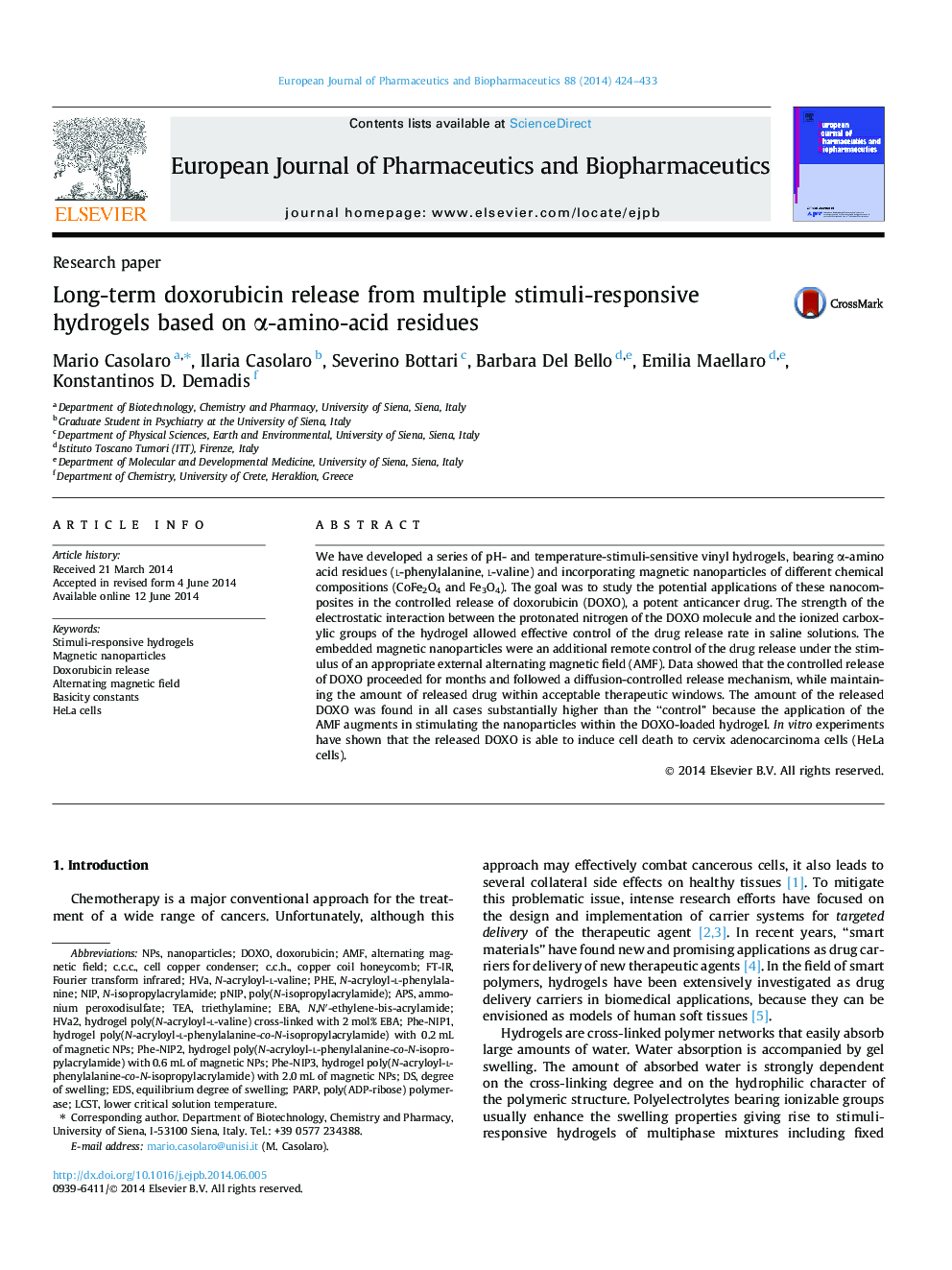| کد مقاله | کد نشریه | سال انتشار | مقاله انگلیسی | نسخه تمام متن |
|---|---|---|---|---|
| 2083824 | 1545338 | 2014 | 10 صفحه PDF | دانلود رایگان |

• We proposed two carboxyl hydrogels with high doxorubicin complexing ability.
• Magnetic nanoparticles were embedded into the hydrogels for remote control.
• The release of drug was triggered by temperature and alternating magnetic field.
• AMF conditions stimulated the release of doxorubicin for long time period.
• The preserved and active doxorubicin showed remarkable HeLa cell death.
We have developed a series of pH- and temperature-stimuli-sensitive vinyl hydrogels, bearing α-amino acid residues (l-phenylalanine, l-valine) and incorporating magnetic nanoparticles of different chemical compositions (CoFe2O4 and Fe3O4). The goal was to study the potential applications of these nanocomposites in the controlled release of doxorubicin (DOXO), a potent anticancer drug. The strength of the electrostatic interaction between the protonated nitrogen of the DOXO molecule and the ionized carboxylic groups of the hydrogel allowed effective control of the drug release rate in saline solutions. The embedded magnetic nanoparticles were an additional remote control of the drug release under the stimulus of an appropriate external alternating magnetic field (AMF). Data showed that the controlled release of DOXO proceeded for months and followed a diffusion-controlled release mechanism, while maintaining the amount of released drug within acceptable therapeutic windows. The amount of the released DOXO was found in all cases substantially higher than the “control” because the application of the AMF augments in stimulating the nanoparticles within the DOXO-loaded hydrogel. In vitro experiments have shown that the released DOXO is able to induce cell death to cervix adenocarcinoma cells (HeLa cells).
Cumulative doxorubicin release (%) from DOXO-loaded magnetic-hydrogels based on α-aminoacid residues (l-phenylalanine and l-valine) under different stimulations (temperature and alternating magnetic field).Figure optionsDownload high-quality image (165 K)Download as PowerPoint slide
Journal: European Journal of Pharmaceutics and Biopharmaceutics - Volume 88, Issue 2, October 2014, Pages 424–433